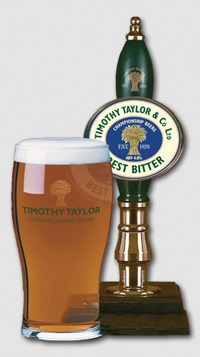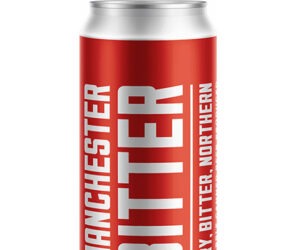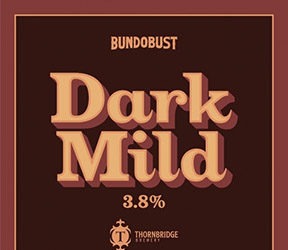Timothy Taylor Brewery: Boltmaker clone
Timothy Taylor Brewery: Boltmaker clone
(5 gallons/19 L, all-grain)
OG = 1.037 FG = 1.008
IBU = 29 SRM = 9 ABV = 3.9%
Timothy Taylor Best Bitter won Supreme Champion Silver in 1993. Its description is “Hops and fruit combine well with a nutty malt character in this drinkable bitter. Bitterness increases down the glass and lingers in the aftertaste.” The data I have for this beer is OG: 1.037. Malt bill: 95% Golden Promise pale malt, 5% roast crystal malt. Hops: Fuggles, Goldings. Late hops: Styrian Goldings. EBC: 27–29.
Ingredients
7.75 lbs. (3.5 kg) Golden Promise pale malt
5.75 oz. (163 g) crystal malt (120 °L)
3.8 AAU East Kent Golding hops (90 min.) (0.75 oz./21 g at 5% alpha acids)
3.4 AAU Fuggle hops (90 min.) (0.75 oz./21 g at 4.5% alpha acids)
5.4 AAU Styrian Golding hops (0 min.) (1.0 oz./28 g at 5.4% alpha acids)
1 tsp. Irish moss (15 min.)
Wyeast 1028 (London Ale) or Wyeast 1098 (British Ale) yeast
2/3 cup (133 g) dextrose (if priming)
Step by Step
Mash the grains at 152 °F (67 °C) for 60 minutes. Mash out, vorlauf, and then sparge at 170 °F (77 °C) to collect enough wort to result in 5 gallons (19 L) after a 90-minute boil. Boil 90 minutes, adding hops at times indicated. Cool, aerate, and pitch yeast. Ferment at 68 °F (20 °C). After fermentation is complete, bottle or keg as usual.
Extract with grains option: Reduce the 2-row pale malt in the all-grain recipe to 1 lb. 10 oz. (0.74 kg) and add 0.5 lbs. (0.23 kg) Muntons light dried malt extract and 3.3 lbs. (1.5 kg) Muntons extra light liquid malt extract. Steep crushed grains in 3 qts. (3 L) of water at 152 °F (67 °C) for 45 minutes. Combine “grain tea,” water, and dried malt extract to make 3 gallons (11 L) of wort. Boil for 90 minutes, adding hops when indicated and liquid malt extract in the last 15 minutes of the boil. Cool, top off to 5 gallons (19 L), aerate, and pitch yeast. Follow the remaining portion of the all-grain recipe.
Written by Les Howarth

Formerly known as Best Bitter, this classic English bitter was renamed in 2012 but retains its classic copper/amber color, citrus and fruity hop character, and a roasted, malty bitter finish.



